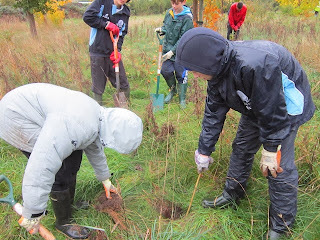The Environment Trust's river clean ups are always a crowd-pleaser, and so it was again this year, with over 50 enthusiastic volunteers donning waders and braving the mud to help remove accumulated rubbish from the Thames foreshore.
Each year in November, Richmond Lock receives its annual service. This is only possible by leaving the lock open, which permits the natural tidal flow, and leaves the foreshore exposed a low tide.
The Port of London Authority provide metal cages which volunteers fill with all manner of rubbish, from the obvious plastic bags, bicycles, ice skates, to Hindu offerings.
Marymount International School and Tower House School joined other volunteers, with the boys from Tower House winning the prize for being the muddiest volunteers.
Despite working all morning, not all the rubbish was removed, with more being revealed as the tide receded. Sewage pollution was also again spotted just upstream of Richmond Bridge, which was reported to the Environment Agency in 2011, but still has not been rectified.
A sunny day greeted volunteers at Richmond Bridge.
Thankfully, the tide receded further than last year.
Marymount girls tip-toe along the edge of the river as the tide goes out.
Volunteers brave the mud and remove accumulated rubbish.
Boys from Tower House School win the muddiest volunteers competition.
A pile of muddy rubbish is testament to the volunteers' enthusiasm.
Ganesha makes his usual appearance close to the bridge.
Ever wondered what happened to all those 1970s Chopper bikes?
Despite previous reports to the Environment Agency, sewage pollution is still evident close to Richmond Bridge, most likely a misconnected washing machine.

















































